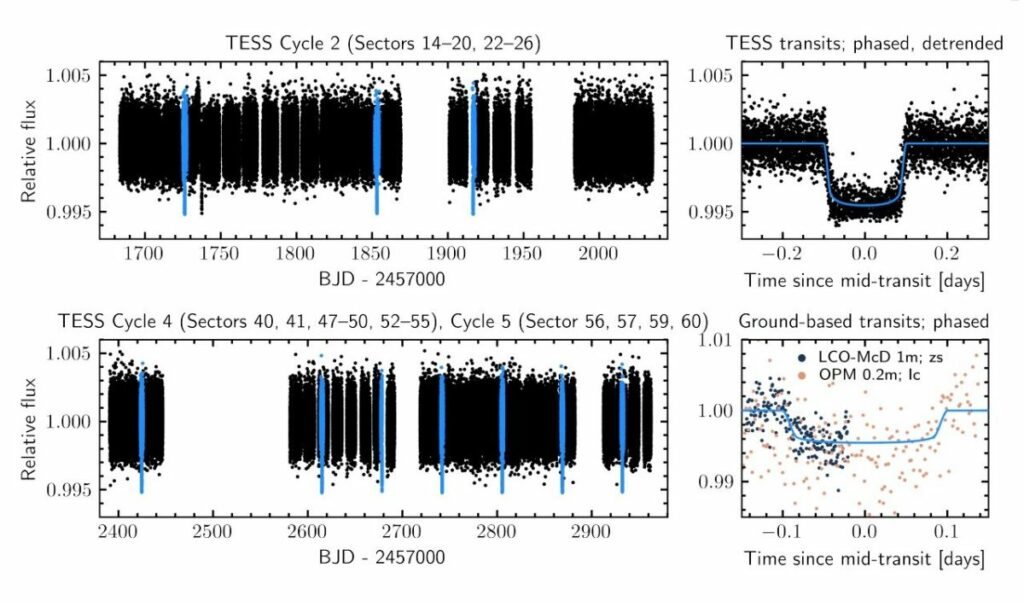Peculiar Orbital Dance: New ‘Warm Jupiter’ Exoplanet Exhibits Unusual Path, Potentially Influenced by Another Celestial Companion
The orbit of the newfound exoplanet spotted with TESS may have been influenced by another planet.
Through NASA’s Transiting Exoplanet Survey Satellite (TESS), astronomers have stumbled upon an intriguing discovery—a “warm-Jupiter” exoplanet exhibiting an uncommon, flattened, and misaligned orbit around its parent star.
Designated as TOI-1859 b, this exoplanet was detected as it transited its star, TOI-1859, situated approximately 730 light-years away from our solar system. The confirmation of its existence was achieved through meticulous observations conducted by the TESS Follow-up Observing Program, employing ground-based facilities.
TOI-1859 b takes approximately 64 Earth days to complete a full orbit around its parent star, which boasts a size about 1.3 times that of the sun. With an estimated diameter of around 78,000 miles (126,000 kilometers), this newly discovered exoplanet is slightly smaller than its namesake, Jupiter, but nearly ten times larger than Earth.
Remarkably, astronomers have determined that TOI-1859 b’s orbit is highly eccentric and misaligned in relation to its star. The team of astronomers suggests that this peculiar orbit might be attributed to interactions with other planets in the exoplanet’s cosmic neighborhood. According to their findings, multiple gas giants tend to form around stars abundant in “metals” (elements heavier than hydrogen or helium), subsequently migrating to the outer regions of their planetary systems. These migrations occur due to gravitational interactions between the planets, resulting in misaligned and eccentric orbits, similar to TOI-1859 b.

Alternatively, the team theorizes that the exoplanet’s orbital characteristics could have been influenced by an encounter with a “brown dwarf” in the system. Brown dwarfs, often referred to as “failed stars,” possess greater mass than gas giants but are unable to trigger the nuclear fusion processes characteristic of stars. The discovery of TOI-1859 b enhances astronomers’ understanding of the mass division between stars and planets.
Interestingly, TOI-1859 b’s close proximity to its star leads to a warmer surface temperature compared to Earth, earning it the classification of a “warm Jupiter.” Unlike the commonly found “hot Jupiters” that orbit their parent stars at closer distances and much shorter periods, warm Jupiters maintain a relatively greater distance. While hot Jupiters can experience scorching temperatures surpassing 1,300 degrees Fahrenheit (725 degrees Celsius) and extreme conditions, warm Jupiters offer comparatively milder surface temperatures.
The team intends to delve deeper into TOI-1859 b’s planetary surroundings to unveil the cause behind its peculiar orbit. Their investigation includes the search for additional planets or brown dwarfs around the dwarf star TOI-1859. Additionally, they will explore whether the exoplanet’s unusual orbit is influenced by the temperature of its host star, potentially shedding more light on the characteristics of warm Jupiters.
Do not forget to share your opinion with us to provide you with the best posts !





0 Comments